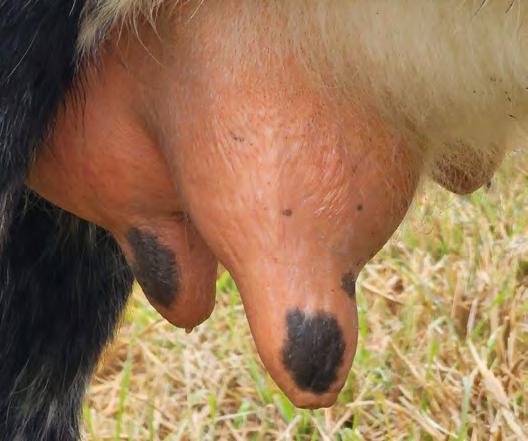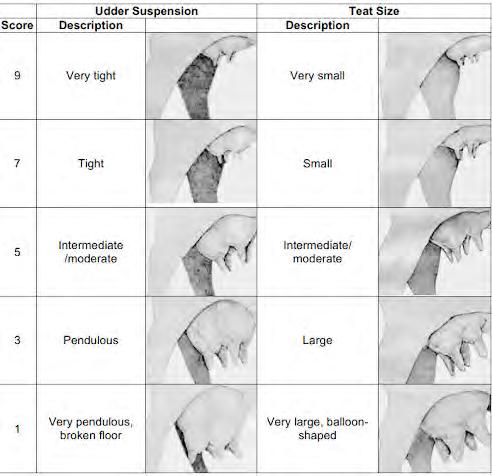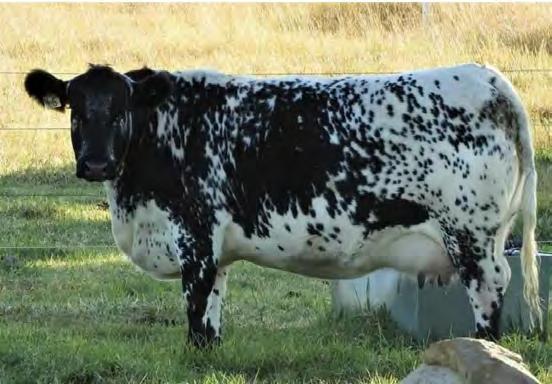
2 minute read
Udderly Important
Good teat and udder quality are essential to the functionality of cows, particularly in commercial operations. With any impact to cow functionality equating to lost time and money, the importance of these traits should not be underestimated.
While significant focus is placed on a cow’s ability to produce milk, the delivery system is every bit as critical. Newborn calves who experience difficulty drinking due to poor udders and teats can be detrimentally affected by little or no colostrum intake and otherwise have their growth and overall health impacted by reduced milk consumption. Ultimately, poor teats and/or udders require human intervention to not only ensure the calf survives and thrives but often to also assist the cow in fending off or overcoming infection (i.e. mastitis) that may be directly attributable to these traits.
Advertisement
As research has revealed, udder and teat characteristics are hereditary, and positive changes can be made through considered selection. Increases in teat and udder quality can be achieved through the use of bulls who routinely produce daughters with high teat and udder quality and by culling those that don’t meet these specifications, and acquiring females that are positive for these better traits. While culling based on udder characteristics may be viewed as convenience or even cosmetic trait selection, ultimately, increasing the udder quality within a program will result in increased longer-term profit due to increased calf health and performance, increased cow health and longevity with fewer burdens on labour and management resources.
Routine scoring can prove a useful tool in this important aspect of any cattle program. Both udder and teat characteristics should be reviewed within 24 hours after calving to assess the overall quality of the milk delivery system. Scores recorded should be based on the weakest quarter of the udder being reviewed:
Udder suspension
Assessments are made of udder support with scores ranging from 1 (very pendulous) to 9 (very tight). Poor udder suspension indicates a lack of ligament support which can result in the udder increasingly hanging further away from the body making it difficult for a calf to drink and potentially resulting in injury to the udder or teats.
Teat size
Assessments are made of teat circumference and length with scores ranging from 1 (very large and bulbous) to 9 (very small). Teats that are either too large or too small create difficulties for calves to nurse, impacting on the intake of colostrum and milk.
An example of uneven quarters and bottle teats


For both traits:
Ideally a cow will score in the middle of the range for both udder suspension and teat size.
A score of 4 or 6 represents a small variation from the ideal, but is consistent with most animals;
A score of 3 or 7 shows a larger deviation from the ideal however, may be considered acceptable in some commercial breeding programs. Seedstock producers may exercise greater caution within this score range;
A score of 2 or 8 is considered poor. Careful consideration should be given to retaining an animal within this score range for breeding purposes;
A score of 1 and 9 would not be considered acceptable to be retained for breeding purposes. An Example of good udder quality and teat size








